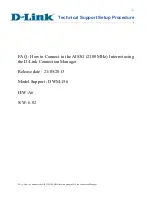
Enabling SCSI Bus Parity
Parity checking is a procedure used by the host adapter to verify
the accuracy of data transfer on the SCSI bus. Data verification is
a desirable option, so SCSI bus parity checking is normally
enabled by default. To use this option most effectively, be sure
that it is enabled on each SCSI device, as well as on the host
adapter. To enable/disable SCSI Bus Parity Check on the host
adapter, See Configure the Host Adapter Parameters in Chapter
3. Consult your hardware documentation for instructions on
enabling parity checking on peripherals.
Note
The only time when you should disable parity checking on the
host adapter is when your system includes a SCSI device that
does not support this option. Again, consult the hardware docu-
mentation for the device.
Setting Enable Disconnection
In the DOS environment you can increase performance slightly if
you set Enable Disconnection to no when there is only a host
adapter and a single disk device on the SCSI bus. You should set
this option to yes, however, if you have more devices on the SCSI
bus. See Configure the BIOS and SCSI Device in Chapter 3.
Send Start Unit Command
This option, which is supported by some SCSI devices, reduces
the load on your computer’s power supply by allowing the host
adapter to power-up disk devices and other peripherals one-at-a-
time when you boot your system. Otherwise, the peripherals will
all power-up at the same time.
Send Start Unit Command is disabled (set to no) by default.
Check your hardware documentation before you enable (set to
yes) this option to make sure your devices support it. Then change
the switch or jumper settings on the device to enable the options.
To enable/disable Send Start Unit Command, See Configure the
BIOS and SCSI Device in Chapter 3.
Adaptec AHA-2740 Series User’s Manual
Stock Number: 510381-00 / Rev. C (Page C-4)
Print Spec Number: 491709-00 Rev C
Current Date: 9/1/93 ECN Date: 9/14/93
AHA-2740 Series User’s Manual
C-4
















































